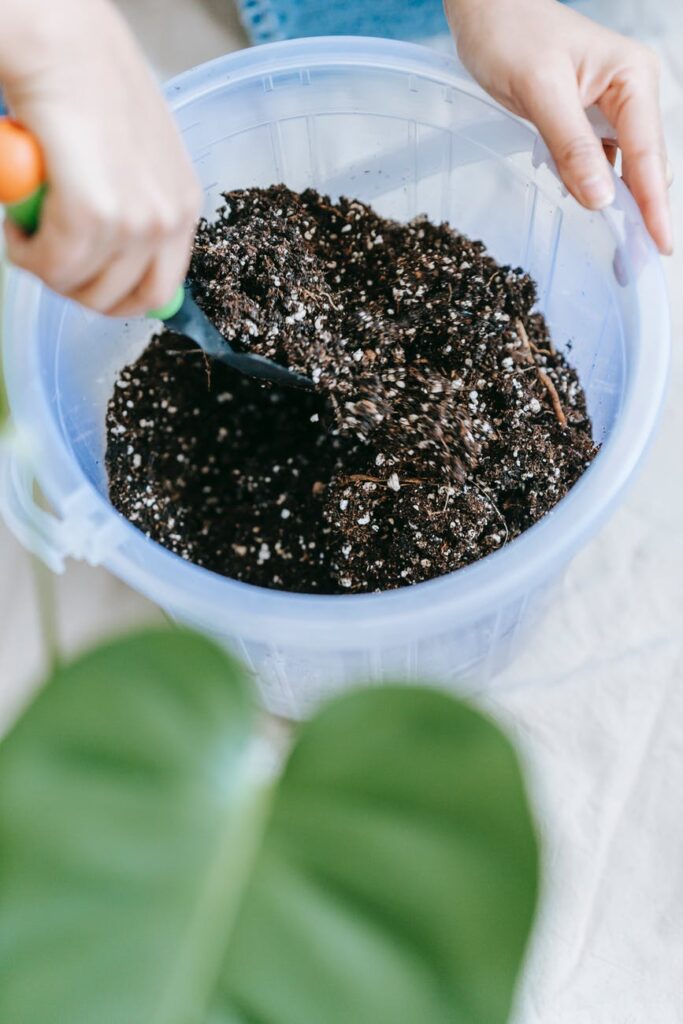Contents
- 1 How deep do the roots of palm trees go?
- 2 The roots of palm trees do not go very deep
- 3 Are palms deep-rooted or shallow-rooted?
- 4 What is special about palm roots?
- 5 What do you need to consider when digging up palm roots?
- 6 How should you transplant a palm tree?
- 7 How often should you repot palms?
- 8 When should you repot palms?
- 9 Where does the word “palm” come from?
- 10 How to repot a palm tree?
- 11 What kind of soil do you need for palm trees?
- 12 Can you propagate palms via offshoots?
- 13 How deep do hemp palms root?
- 14 What special features do palms have?
- 15 Author
How deep do the roots of palm trees go?
If you want to plant a palm tree, you need good conditions. But in addition to the right soil, it is also important that the palms have enough space for their roots. But how much space is that? Are palms shallow or deep rooted? How deep do the roots of palms go?
Palm trees can have very long roots, but they are not deep-rooted: the roots of palm trees only go about one meter below the surface of the earth at the most. Instead, they tend to grow in width.
In this article, we explain in detail how deep the roots of palm trees go. We will also show you the special features of these roots and explain what else you need to consider when planting palms.
The roots of palm trees do not go very deep
Palm trees can grow very high – in extreme cases even up to 60 meters. This leads to the assumption that the roots of these plants also reach very deep into the ground. But this is not the case: palms are shallow-rooted plants. Their roots do not grow downward, but rather in width.
The average depth of the roots is between 30 and 90 cm – they rarely reach deeper into the ground. These values also apply to the width: a root radius around the trunk of 30 to 90 centimeters is the average.
But in terms of width, some palm species can reach considerable numbers of meters: Measurements have shown that the roots of palms can still be detected at a distance of up to 30 meters from the trunk – whereby they do not grow further than one meter below the ground.
Are palms deep-rooted or shallow-rooted?
The roots of palms do not go particularly deep: even tall palms drive their roots up to a maximum of one meter below the ground. As a rule, this is 30 to 90 cm – so in this case you can confidently say: No, palms are not deep-rooted. But their roots do grow in width.
What is special about palm roots?
The root system of the palm tree, like that of other plants, develops from the trunk in the part below the ground. Shortly after germination, the roots develop. They are produced in a special part of the stem, which is also called the “root start area”.
However, there are also palm species in which the roots do not grow below the ground, but above it, and only then pass into the trunk. The most extreme examples of this are palms from the tropical rainforest: In these “root-skewed” palms, supporting roots grow from the section of the trunk above the ground. These supporting roots can be 2 to 3 meters long.
However, there are even more differences to “normal” deciduous and coniferous trees: In the palm tree, there is no large trunk root that branches out and becomes thicker and thicker. Instead, from the base of the trunk permanently new roots come off, which are all about the same thickness and, compared to other trees, rather hardly branch out.
What do you need to consider when digging up palm roots?
It may be that your palm tree species has pointed thorns. In such a case, you should tie the palm leaves together and definitely wear thick garden gloves to minimize the risk of injury.
Also important when digging: If possible, leave the root ball case alone – so do not work on it with rakes or other tools. Only if it is rotten or infested with worms should you clean or remove the relevant areas.
How should you transplant a palm tree?
Palm trees are actually relatively easy to care for – compared to orchids, for example. Nevertheless, you should keep a few things in mind when transplanting palms. We will give you some useful tips:
How often should you repot palms?
Palms form a very dense root system – at least most species do. Therefore, you should not let too much time pass between repotting actions. The following applies: Younger palms should be repotted after about one year; for older palms, a new, larger pot every three to five years is sufficient.
When should you repot palms?
The best time to repot a palm is when the root ball is pressing against the flower pot. You can tell when the roots are already growing over the edge of the pot or out the bottom of the drain hole. Then it’s high time for a new pot. Ideally, repot palms in the spring – that is, between late April and early May. However, if the pot becomes too tight, don’t wait that long, but repot your palm quietly in season even then. Choose a pot that is about 2 to 3 centimeters larger than the old one.
Where does the word “palm” come from?
The origin of the word is in Latin: palma means something like “flat hand” – we know the English word “palm”, which still means “palm”. But what does the flat hand have to do with the plant? It’s simple: a hand with outstretched fingers looks like the fan-shaped leaves of the palm tree.

How to repot a palm tree?
Do you have the right pot and the right soil? Great – then you can start repotting your palm tree. These steps are necessary:
- Loosen the old root ball from the rim of the pot – preferably with a bread knife.
- Lift the palm out and shake off the old soil
- Lightly trim any fine roots, if necessary
- Place a small shard of clay on top of the pour hole
- Immerse the root ball in water for some time
- Fill up the pot: With a layer of drainage and soil
- Then you can press the soil down and water the palm tree
- Attention: In the first weeks you should not place it in the blazing sun.
What kind of soil do you need for palm trees?
Palm trees need special soil. You should rather not use normal potting soil. This is because it does not allow enough air to pass through. Thus, it can cause the roots of the palm tree to rot. You can either buy special palm soil or loosen up normal soil with some quartz sand and clay or loam. Here we explain in detail what soil your palm tree needs and why you should not use normal potting soil.

Can you propagate palms via offshoots?
The bad answer: No, unfortunately, you can not separate offshoots from palms. You can only cut off the side shoots, which experts also refer to as “childels”, and grow new palms from them. In most cases, however, breeding is only possible via palm seeds – which can be very expensive.
How deep do hemp palms root?
The same applies to hemp palms as to most other palm species: they are not deep-rooted, but rather stretch their roots out wide. The roots go about 30 to 90 cm deep into the earth.
What special features do palms have?
Palm trees are of course very different from most conifers and deciduous trees. This makes them exotic and interesting and also very popular for houseplants. The palm family is distinguished by having a simple, branchless main trunk. This is both tough and tubular. Unlike deciduous and coniferous trees, palms also have no bark or bark. Palm trees are referred to as bast, which lines the trunk of the palm tree.


